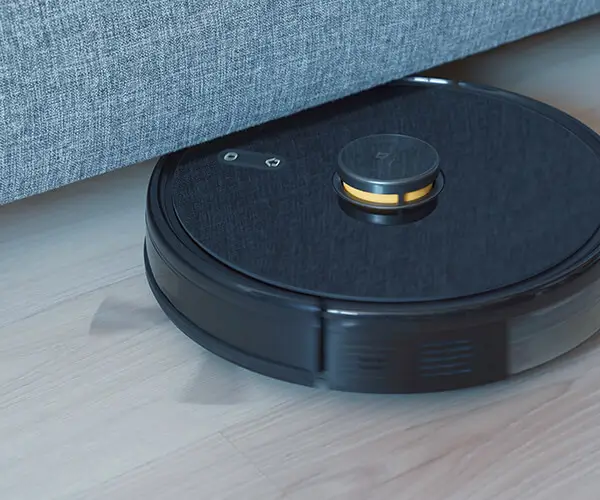part 1:
Unlocking Performance: A Comprehensive Guide to 12V DC Geared Motor Design Calculations
Imagine a world where tiny motors power everything from electric scooters to robotic arms, transforming ideas into motion with precision and reliability. At the heart of this revolution lies the 12V DC geared motor—an unassuming yet potent component that underpins countless innovations. For both hobbyists and professional engineers, understanding how to design, select, and optimize these motors can dramatically enhance performance and longevity.

Understanding the Basics: What is a 12V DC Geared Motor?
A DC geared motor combines a direct current (DC) motor with a gear train—it’s essentially a motor fitted with a gearbox that reduces speed while increasing torque. Operating typically at 12 volts, these motors are favored for their simplicity, affordability, and versatility.
Before delving into calculations, it’s vital to understand the core elements:
DC Motor: Converts electrical energy into rotational motion. Gearbox/Reducer: Modifies the output speed and torque. Output Shaft: The part delivering mechanical power.
Because these motors are applied across varying load conditions, designing an optimal system requires thorough mathematical understanding.
The Foundations of Design Calculations
Designing a 12V DC geared motor isn't just about knowing the specifications; it's about understanding how various parameters interact within the system. Key calculations often include:
Torque requirement estimations Speed targets Gear ratio determination Power calculations
These calculations, often encapsulated in PDF guides and technical manuals, form the backbone of reliable motor design.
Estimating Load Torque
The starting point is understanding the load. For example, if you're designing a robot wheel drive, you need to calculate the torque needed to move the robot under various conditions.
Torque can be estimated with the formula:
[ T = F \times r ]
Where:
( T ) is the torque ( F ) is the force required to move/load the object ( r ) is the radius of the wheel or load
Suppose your robotic wheel requires a force ( F ) of 10N to overcome friction and acceleration, and the wheel has a radius of 0.05 meters (5cm):
[ T = 10\,N \times 0.05\,m = 0.5\,Nm ]
This torque indicates the minimum capacity your geared motor must provide at the output shaft.
Selecting the Gear Ratio
The gear ratio directly influences the motor’s output speed and torque. It is calculated as:
[ Gear\,Ratio = \frac{N{input}}{N{output}} ]
Alternatively, based on desired output torque and speed:
[ Gear\,Ratio = \frac{T{output}}{T{motor}} = \frac{V{motor} \times I{load}}{Power\,requirements} ]
In practical terms, if your load needs a high torque of 0.5 Nm but the motor's peak torque is 0.1 Nm, a suitable gear ratio could be 5:1, reducing speed accordingly but amplifying torque.
Speed Calculation
Motor speed at no load (free-run speed) can be estimated using data from manufacturer datasheets, but generally, a 12V DC motor operates around 3000-4000 RPM. After gear reduction, the output speed is reduced proportionally.
[ N{output} = \frac{N{motor}}{Gear\,Ratio} ]
So with a 36:1 gear ratio:
[ N_{output} = \frac{3600\,rpm}{36} = 100\,rpm ]
This provides a balanced combination of torque and speed for many applications.
Power and Efficiency Considerations
Calculating power involves both torque and speed:
[ P = \frac{T \times \omega}{9550} ]
Where:
( P ) is power in kilowatts, ( T ) is torque in Nm, ( \omega ) is angular velocity in RPM.
For the earlier example (0.5 Nm torque at 100 RPM):
[ P = \frac{0.5 \times 100}{9550} \approx 0.0052\,kW \approx 5.2\,W ]
Knowing the power helps in choosing a motor with appropriate ratings, ensuring longevity and avoiding overheating.
Efficiency is another key factor. Gearbox efficiencies typically range from 85% to 95%. This affects the power transmitted to the load and influences your motor size selection.
Practical Design Steps Using PDFs and Calculations
Designing a reliable 12V DC geared motor system involves these steps:
Define Load Conditions: Identify force, distance, and speed requirements. Calculate Required Torque and Speed: Use formulas to determine basic needs. Determine Gear Ratio: Balance torque enhancement and speed reduction. Select a Suitable Motor: Based on power ratings, voltage, and efficiency. Incorporate Gearbox Efficiency: Adjust calculations for losses. Verify Thermal Limits: Ensure motor and gearbox can operate without overheating. Consult Design Calculations PDFs: Many manufacturer guides compile these calculations, offering detailed charts and examples.
These PDF references serve as invaluable tools — they synthesize complex formulas, real-world examples, and standards, guiding sequential decision-making.
In the Next Part
We’ll delve into advanced design considerations, thermal management, life cycle analysis, and practical tips to optimize the efficiency and lifespan of your 12V DC geared motors. We'll also explore the importance of selecting the right materials, bearing systems, and maintenance practices.
Stay tuned for part two, where we bring this technical journey into real-world application and optimization strategies, transforming theoretical calculations into resilient, high-performance systems.
Established in 2005, Kpower has been dedicated to a professional compact motion unit manufacturer, headquartered in Dongguan, Guangdong Province, China.




































